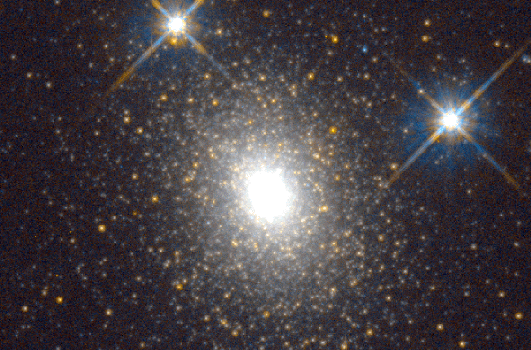Credit & Copyright: Michael Rich, Kenneth Mighell, and James D. Neill
(Columbia
University), and Wendy Freedman (Carnegie
Observatories),
Hubble Space Telescope, and
NASA
Explanation:
G1, pictured above, is the brightest known
globular cluster in the whole
Local Group of galaxies. Also called Mayall II,
it orbits the center of the largest nearby galaxy:
M31.
G1 contains over 300,000 stars and is almost as
old as the entire universe.
In fact, observations of this
globular cluster show
stars as old as the oldest of the roughly 250 known
globular clusters in our own
Milky Way Galaxy.
This image
was taken with the
Hubble Space Telescope in July of 1994.
It shows, for the first time, the same fine detail in a
distant globular cluster
as can be discerned from a ground-based telescope of a
globular cluster in
our own Galaxy.
1999 2000 2001 2002 2003 2004 2005 2006 2007 2008 2009 2010 2011 2012 2013 2014 2015 2016 2017 2018 2019 2020 2021 2022 2023 2024 2025 |
Yanvar' Fevral' Mart Aprel' Mai Iyun' Iyul' Avgust Sentyabr' Oktyabr' Noyabr' Dekabr' |
NASA Web Site Statements, Warnings, and Disclaimers
NASA Official: Jay Norris. Specific rights apply.
A service of: LHEA at NASA / GSFC
& Michigan Tech. U.
|
Publikacii s klyuchevymi slovami:
globular cluster - Andromeda - Sharovoe skoplenie - vozrast Vselennoi - vozrast sharovyh skoplenii
Publikacii so slovami: globular cluster - Andromeda - Sharovoe skoplenie - vozrast Vselennoi - vozrast sharovyh skoplenii | |
Sm. takzhe:
Vse publikacii na tu zhe temu >> | |
